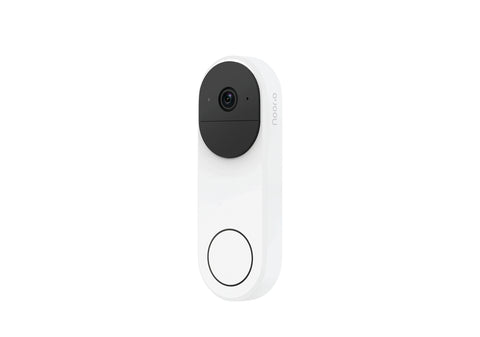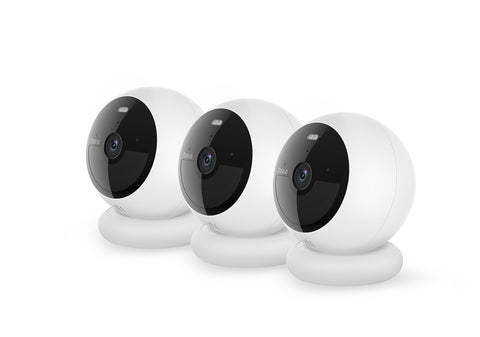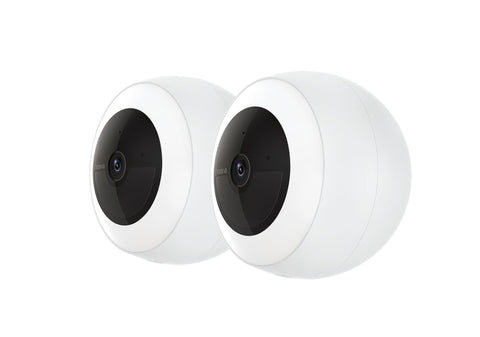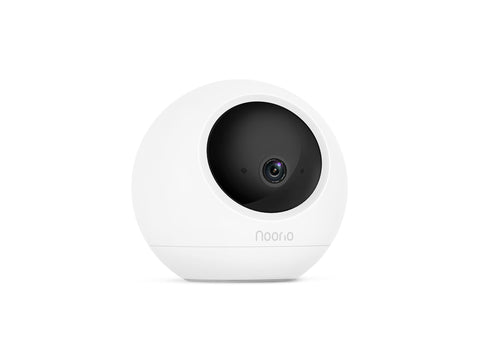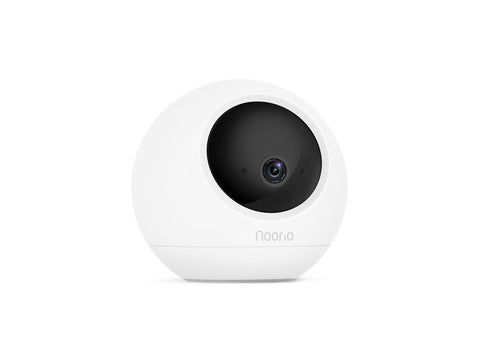Smart Security Camera for Home Security
Smart security cameras have become a necessity in most modern homes. Smart security cameras are indispensable household tools to protect property safety, care for the elderly, children and pets, communicate with visitors, etc.
To meet more home security needs, the updated iteration of smart security camera products is very fast. There are many camera brands on the market to choose from, each with its outstanding features. However, now wireless security cameras are more and more in everyone's field of vision, occupying an important position in the camera market.
Compared with wired cameras, what are the characteristics of wireless security cameras? How should consumers choose a camera that suits their home? And how will this industry develop?
Smart Security Cameras are categorized as: Fully-Wired, Semi-Wireless, and Wire-Free Smart Security Cameras.
Fully-Wired Smart Security Cameras

The camera body is fully connected and needs to be wholly joined to the power outlet, a relatively traditional and common form of the security camera. The advantage is that it can be powered on 24 hours a day and recorded continuously. The disadvantage is that it cannot be installed anywhere, requires wiring, and has a power outlet nearby; once the power is cut-off, it will stop working. The price is lower than the latest wireless security camera, suitable for users with a limited budget.
Semi-Wireless Smart Security Cameras
Semi-Wireless Smart Security Cameras is an intermediate solution between wired and fully wireless. Compared with the fully-wired, it has a certain degree of freedom, but it still needs to be connected to the power outlet, and there are still limitations in installation. Compared with the Fully-Wired, there is no apparent advantage.
Wire-Free Smart Security Cameras
The Advantages and Disadvantages of the Wireless Security Cameras
Advantages
- The camera can be directly connected to the monitoring device through the APP, with a built-in microphone that can realize remote video calls and control.
- The wireless security camera also has an AI alarm function. The wireless security camera has a built-in camera chip and has AI detection system, which can perform human detection and trigger recording.
- The wireless security camera adopts a waterproof design and can be placed in any indoor or outdoor environment, with a high degree of freedom and environmental adaptability.
- Equipped with a battery charging module convenient for daily use. The wireless security camera has a built-in lithium battery, which has a long battery life and does not have the problem of running out of power.
- The wireless security camera has a Wi-Fi antenna. When you need to connect to the Internet, turn on the Wi-Fi.
- The home smart wireless security camera can provide a wider variety of scene options to meet the needs of family life; Easy to install; no need to run wires and find power sockets; No wired network interference, no wiring required.
- Small size, lightweight, low cost, high performance; No noise pollution will not affect the user's visual perception, stable performance, good stability.
- Low power consumption, the power consumption is only about one-fifth of the ordinary camera, energy-saving, and environmental protection.
- Ample built-in storage space, high definition, clear and smooth picture quality.
- A high degree of intelligence can effectively improve safety and reliability.

Disadvantages
- The price of wireless security camera is relatively high.
- Need to be recharged regularly.
- Once it has no network signal coverage, it cannot be controlled by the App.
- There’s a risk of being stolen.
Key Features and Price of Different Brands of Wireless Security Cameras
| Design | Brand | Price | Features |
 |
Noorio B200 Wireless Indoor and Outdoor Security Camera |
$119 |
|
 |
Brand 1 |
$179.99 |
|
|
|
Brand 2 |
$129.99 |
|

|
Brand 3 |
$129.99 |
|

|
Brand 4 |
$199.99 |
|
Wireless Security Camera Development
Wireless Security Camera Development Direction
Wireless security cameras will become a critical security product in the future and play a significant role in intelligent security systems and smart city construction. Wireless security camera technology has matured and been applied in many industries. The market size of wireless video surveillance is expected to exceed 10 billion CNY. Cloud computing service based on a wireless video surveillance system is one of the typical representatives of the IoT and artificial intelligence.
Wireless Security Camera Development Trend
Achieve functional improvements through hardware upgrades, such as enhancing image processing capabilities, supporting face recognition, and more sensor fusion. Continuously improve algorithms through software updates to adapt to new application requirements. Utilize 5G network deployment to provide video and surveillance equipment that brings more bandwidth and better speed access. Predict possible accidents or potentially dangerous situations through in-depth analysis and mining of video data. Use AI technology to assist decision-making, including identifying facial features, Automatically generating early warning reminders, etc.
The Development Prospect of Wireless Security Camera
With the increasing popularity of mobile terminals, mobile video surveillance is shifting from PC to smartphones. Video surveillance has been widely used in various fields such as home security, education, and training, public safety, medical health, etc. It is essential. With the rapid growth of the Internet and related industries, video surveillance has gradually entered the public eye as an emerging business format. The video surveillance industry faces unprecedented opportunities and challenges, requiring enterprises to strengthen innovation and increase research and development. The entire endeavor can thrive by investing heavily and expanding application fields.

